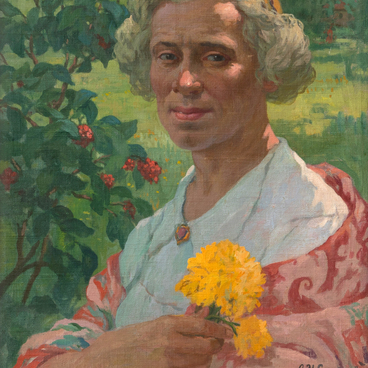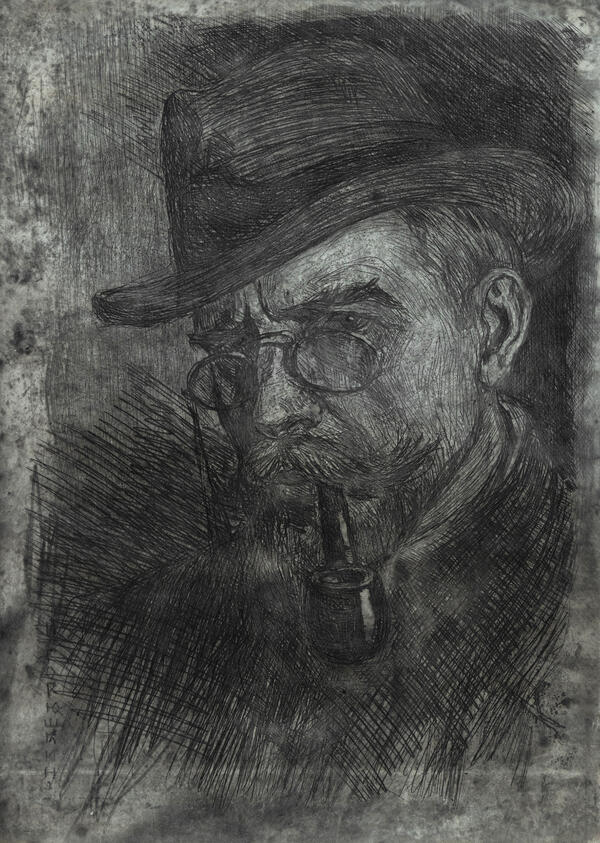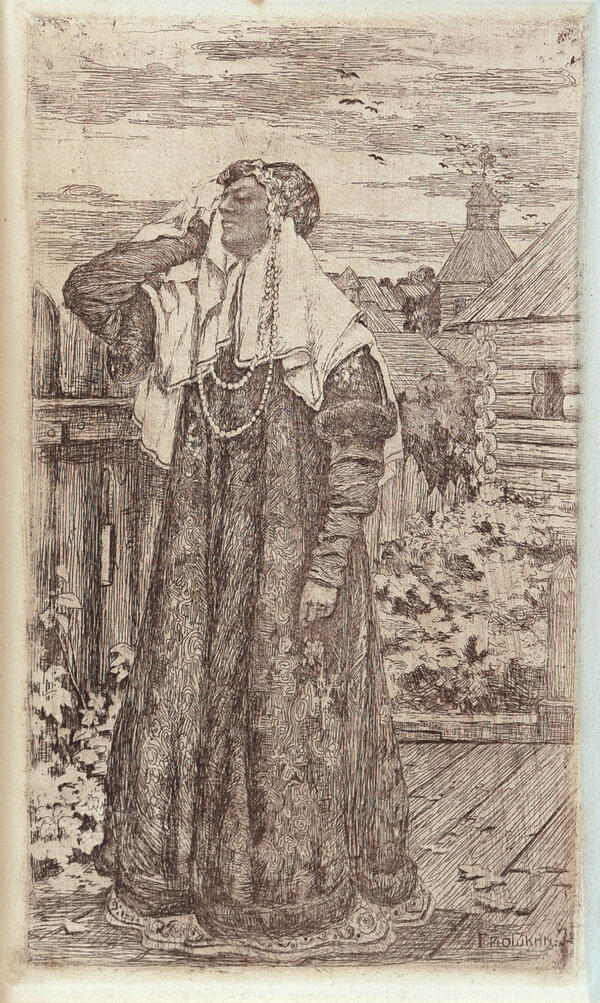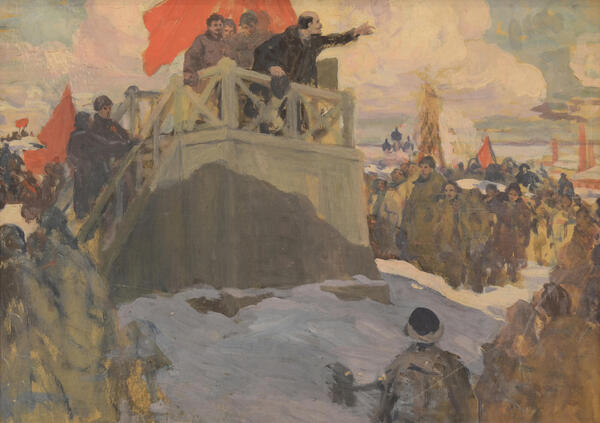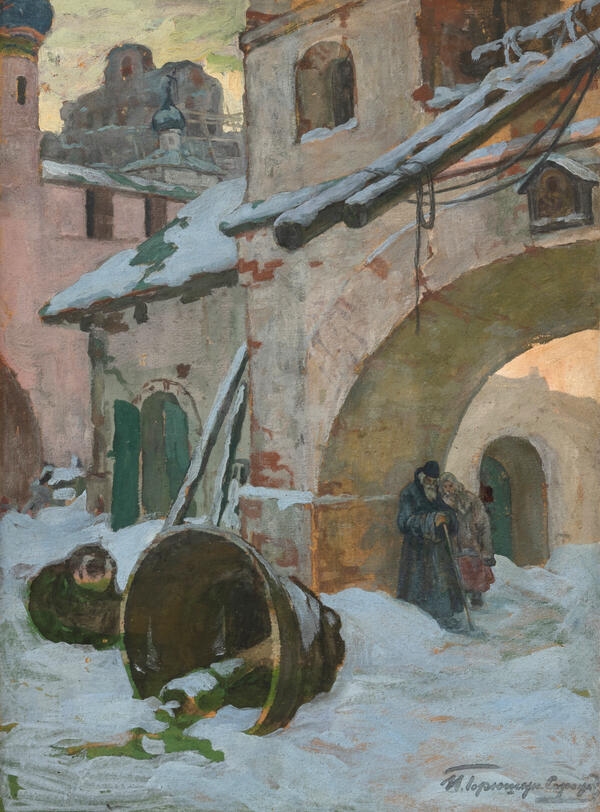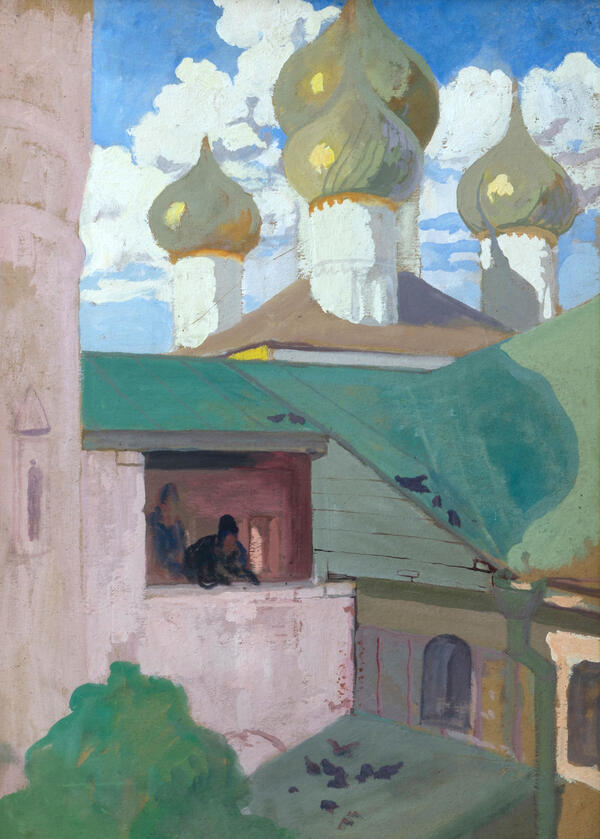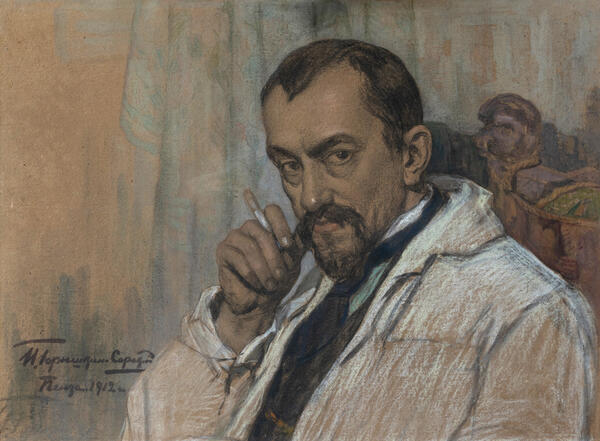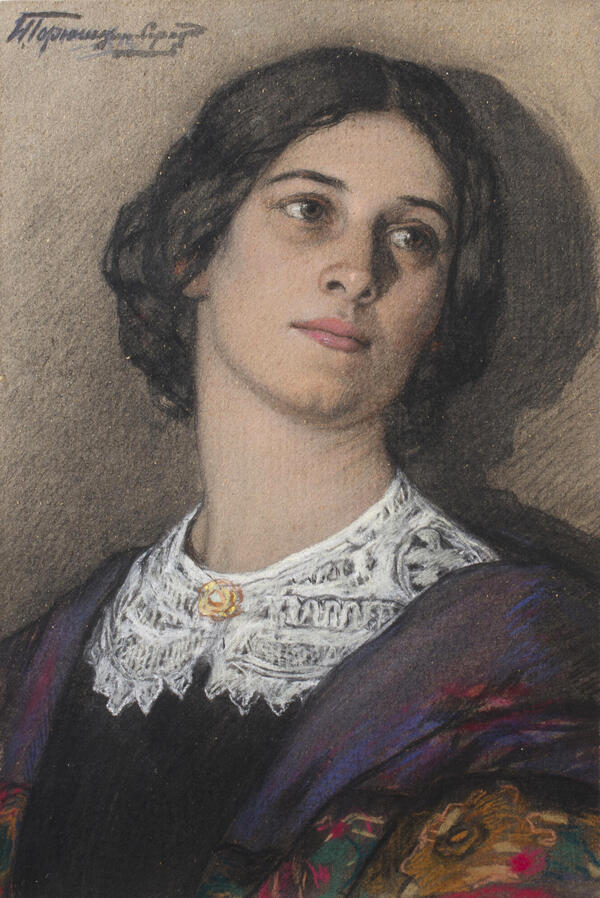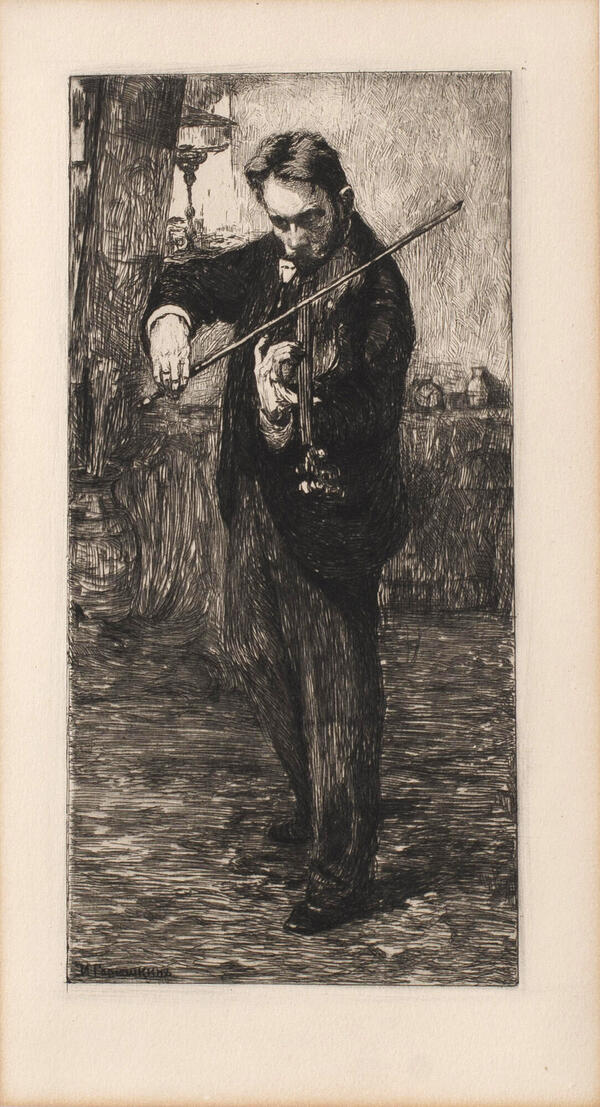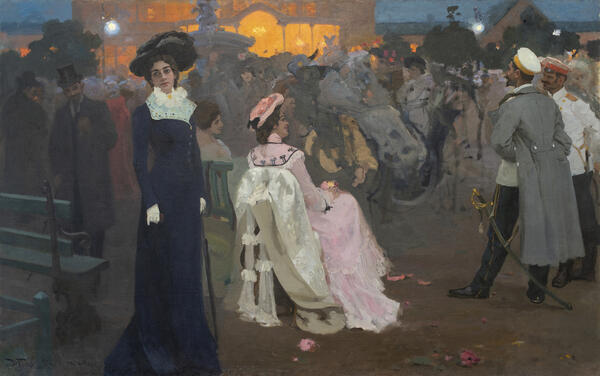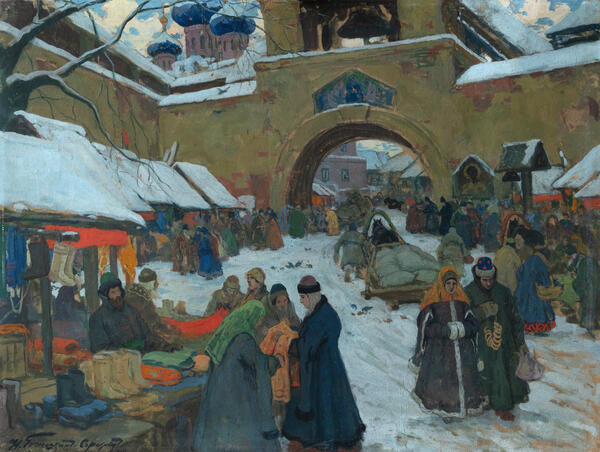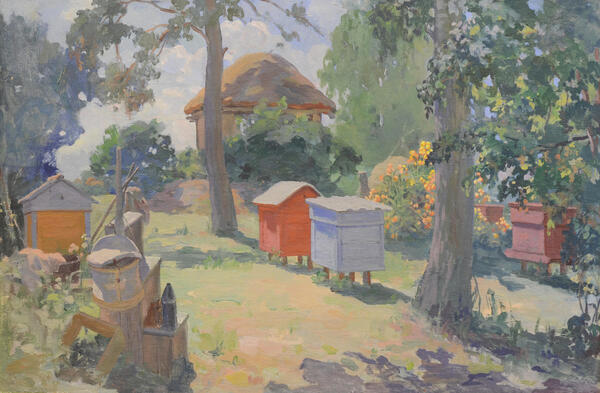Ivan Silych Goryushkin-Sorokopudov painted many of his portraits in one and the same spot — on the terrace of his house in the village of Ivanovka, near Penza. The terrace was overgrown with greenery. In this particular work from the collection of the Penza Regional Art Gallery, the artist used the technique of backlighting. The model is illuminated from the back, which creates a sense of mystery through the shadows on her face.
According to art historians, Ivan Goryushkin-Sorokopudov portrayed Fyokla Ivanovna Kholdina, the mother of his wife Klavdiya Petrovna. The artist depicted an elderly woman sitting on a terrace. The setting sun casts barely noticeable highlights on the frame of her eyeglasses. She is wearing a dark purple dress and holding an open Book of the Gospels in her hands. There is a black lace scarf on her head, and a gold medallion on her necklace.
The muted colors of the red shawl around the woman’s shoulders are in harmony with the painting’s overall tranquil atmosphere. She looks over her glasses with a sharp and attentive gaze, which gives her a serious expression. Ivan Goryushkin-Sorokopudov lost his mother at an early age and did not know her well. Maybe, this is why he put all his feelings into this picture to portray his mother-in-law as if she were his mother. Her image exudes nobility and insistence on high standards.
In this large portrait, Ivan Goryushkin-Sorokopudov created the image of a mother, not in a documentary way, but rather in a romanticized manner. The future artist lost his parents at an early age and was forced to earn a living, wandering from one home to another. Throughout his life, he was troubled by the thought that he was left without a mother so early on.
Ivan
Goryushkin-Sorokopudov presented a generalized and idealized portrait based on
the image of his mother-in-law. He added a touch of comfort to this work with
the shawl draped around the woman’s shoulders and the table set up for tea,
featuring a mug, a butter dish, and a pot. The artist created this knee-high
portrait of Fyokla Kholdina in 1904.
